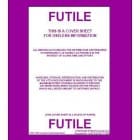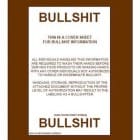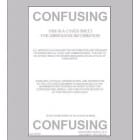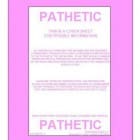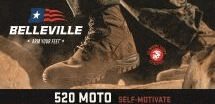Everyone from individuals to unit commanders want to establish ‘standards’ of skill. When we apply the ‘standards’ test to combat marksmanship, we generally like to use courses of fire or skill drills to measure performance levels.
In my travels over the past few decades, when starting out with a new group, agency, or unit I often ask the leader or CO where the skill levels are with his people. The answer is almost always, “my guys are good”. Remember, good is a relative term. In some organizations, that can mean that they actually hit their targets occasionally, or that in some rare instances, they are really good solid shooters. A great many trainers of my era have developed skill drills to measure levels of proficiency. Many times, I have used those that were developed by others. The famous ‘El Presidente’ pistol drill is a great example. In most cases, after a couple of days of disciplined training and range practice, most students leave the class with enhanced levels of skill.
In short, if I have done my job they have left the range better than they arrived. The real secret to reaching acceptable standards is practice. What a really good trainer does is give you the tools to utilize in practice. If you don’t practice, you will very likely never really be ‘good’. By the way, this applies to most things in life.
If the standards are established to be challenging enough to produce true skill levels that are of benefit, our goals are fine. Sadly, what we see so often is very low standards that nearly everyone can pass. Law enforcement is a classic example of this, and most military combat marksmanship ‘standards’ are not far behind. Just look at the CCW skill requirements that one has to pass in most states (if they have them). So, we all understand that ‘standards’ must be established and realistic, then practiced until the individual can meet these requirements.
I just recently had a gentleman inform me that he passed my ‘wizard drill’ with flying colors, and in his mind it was not challenging in the least bit. After a short conversation concerning his fantastic shooting skills, he admitted in the conversation that it took him a few tries to pass… WTF! I then informed him that the first try (shot COLD) is the only thing that counts; warm ups just don’t matter. You don’t get a chance to practice your draw, getting a slight picture, press checking your weapon, or any of the other stupid sh-t that people do on the range. If you can’t deliver on the first try, you better practice more.
As important as standards are, and nearly all top shooters can quote the score or placement in a given shooting event where standards are measured, there is another factor that even the most lowly second lieutenant can quote is, after standards come the importance of ‘conditions’. This is an area that is widely ignored in the training world. Nobody likes to go to the range in terrible weather. I learned a long time ago that training classes in the Winter months just don’t go. Folks want a nice pleasant warm day with sunshine/dry conditions. Ask them to show up when it is cold, wet, or really muggy weather is a problem. Try to function with just a couple of hours of sleep over two days, and then see how well you perform on your ‘standards’.
I live in a part of the world where Winter is not for the faint of heart, or those folks that like to go around all year in flip flops. When you are dressed for cold weather, wearing gloves, and it is close to zero, any combat marksmanship standard you have is going to suffer terribly. In most cases, skill levels will drop at least twenty five percent. If you normally are just fair in nice weather, you will really suck when the cold conditions take their toll. Most folks answer is to not practice or go to the range until Spring or Summer arrives. If you live in a part of the world where weather is a factor, or you must function in low light, the only ‘standards’ that really matter are the ones that reflect the ‘conditions’ you will really have to function in.
If all you do is play games with guns, then brag all you want about how good your ‘standards’ are. If you must work or function in an environment that produces ‘conditions’ that you would not normally like for best results, maybe testing you standards in less than ideal ‘conditions’ from time to time is in order.
Stay Safe; Stay Alert.
– Ken Hackathorn

Ken Hackathorn has served as a US Army Special Forces Small Arms Instructor, Gunsite Instructor, and NRA Police Firearms Instructor. He is currently an FBI Certified Firearms Instructor, Certified Deputy Sheriff with Washington County SO, Ohio, and a SRT member and Special Response Team trainer. Ken has trained US Military Special Operations forces, Marine FAST and SOTG units and is a contract small arms trainer to FBI SWAT and HRT.
Ken has provided training to Federal, State, and local law enforcement agencies and been active in small arms training for the past 25 years. He has written firearms related material for Guns & Ammo, Combat Handguns, Soldier Of Fortune, and currently American Handgunner and contributed to at least six other gun/shooting journals. Ken was also a founding member of IPSC and IDPA.
Gunfighter Moment is a weekly feature brought to you by Bravo Company USA. Bravo Company is home of the Gunfighters, and each week they bring us a different trainer to offer some words of wisdom.








